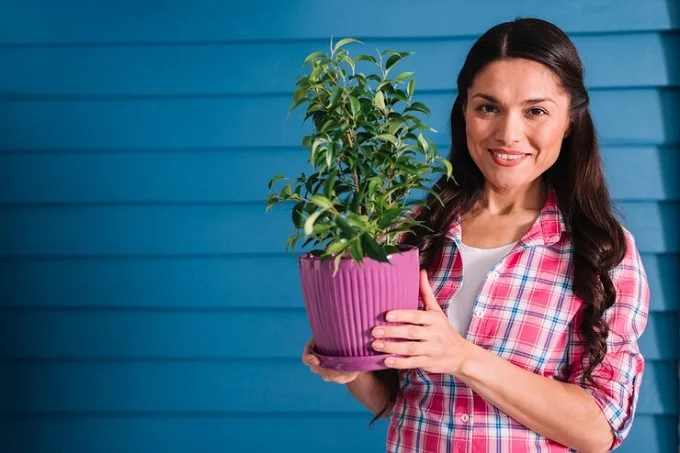
Have you ever thought about how plants might be able to help each other grow? That’s what companion planting is all about. It’s a way of putting plants next to each other that can benefit from being close together. This method has been around for a long time, and it can make your garden healthier and easier to take care of.
Companion planting is valuable because it helps create a thriving, low-maintenance garden by pairing plants strategically. When you use companion planting, you’re working with nature to make your garden stronger and more productive.
The History and Science of Companion Planting
Ancient Origins
People have been using companion planting for thousands of years. One famous example is the “Three Sisters” method used by Native Americans. They would plant corn, beans, and squash together because these plants helped each other grow better.
Why Companion Planting Works
Scientists have found several reasons why companion planting is so effective:
- Pest and disease management: Some plants can keep bugs away or stop diseases from spreading.
- Nutrient cycling: Certain plants can make the soil healthier for other plants.
- Microclimate modification: Some plants can create better growing conditions for their neighbors.
Successful Combinations
Research has shown that some plant pairs work really well together. For example:
- Marigolds planted near tomatoes can help keep pests away.
- Basil grown next to tomatoes can improve their flavor and growth
- Nasturtiums can protect plants in the cabbage family from harmful insects.
Key Benefits of Companion Planting
Pest and Disease Control
One of the biggest advantages of companion planting is that it can help keep your garden free from pests and diseases without using harmful chemicals.
Repelling Insects and Pests
Some plants have strong smells that bugs don’t like. For example:
- Planting aromatic herbs like basil, mint, or rosemary near your vegetables can help keep pests away.
- Marigolds are great at repelling many garden pests and can be planted throughout your garden.
Attracting Beneficial Insects
Not all insects are bad for your garden. Some can actually help by eating the pests that damage your plants. Companion planting can attract these helpful bugs:
- Ladybugs and lacewings eat aphids and other small pests.
- Bees and butterflies help pollinate your plants, which is essential for many fruits and vegetables.
Improved Soil Health
Companion planting can make your soil healthier, which means better growing conditions for all your plants.
- Legumes like peas and beans can add nitrogen to the soil, which other plants need to grow.
- Plants with deep roots, like comfrey, can bring up nutrients from deep in the soil.
- When plants die and decompose, they add organic matter to the soil, making it richer.
Efficient Use of Space and Resources
Companion planting helps you make the most of your garden space:
- Tall plants like corn can provide support for climbing plants like pole beans.
- Plants that grow well in shade can be planted under taller sun-loving plants.
- Different plants use different nutrients, so planting them together can reduce competition.
Increased Yields and Nutritional Value
When you use companion planting, you might notice that your garden produces more food:
- Plants grow better when they have the right neighbors.
- Some companion plants can make vegetables taste better.
- Healthier plants often have more vitamins and nutrients.
Companion Planting Strategies and Techniques
Choosing Main Crops and Companions
To start companion planting, follow these steps:
- Decide which main crops you want to grow.
- Research which plants work well with your main crops.
- Make sure the companions you choose get along with each other too.
Fail-Safe Companion Plants
Some plants are generally good for any garden. These “fail-safe” companions include:
- Herbs like lemon balm, marjoram, and oregano
- Flowers such as marigolds, nasturtiums, and borage
- Wild plants like stinging nettle and dandelion (yes, even weeds can be helpful!)
These plants can attract beneficial insects, improve soil health, and help prevent diseases in your garden.
Implementing Companion Planting in Your Garden
Here are some popular companion planting combinations to try:
Tomato Companions
- Plant basil near tomatoes to improve their flavor and growth.
- Grow marigolds around tomatoes to repel pests.
Cabbage Family Protectors
- Plant nasturtiums near broccoli, cabbage, and cauliflower to deter pests.
Strawberry Helpers
- Grow borage near strawberries to attract pollinators and improve fruit production [[11]].
When planning your garden, think about how you can incorporate these combinations. Remember to rotate your crops each year to keep the soil healthy and prevent pest buildup.
Companion Planting Chart
Here’s a simple chart to help you get started with companion planting:
| Main Crop | Good Companions | Bad Companions |
|---|---|---|
| Tomatoes | Basil, Marigolds, Carrots | Potatoes, Cabbage |
| Beans | Corn, Carrots, Cucumbers | Onions, Garlic |
| Carrots | Tomatoes, Onions, Peas | Dill |
| Cucumbers | Beans, Peas, Radishes | Potatoes |
| Lettuce | Carrots, Radishes, Strawberries | None |
Conclusion
Companion planting is a fantastic way to create a thriving, sustainable garden ecosystem. By working with nature and understanding how plants can help each other, you can grow a healthier, more productive garden with less work.
Remember these key benefits of companion planting:
- It helps control pests and diseases naturally.
- It improves soil health.
- It makes efficient use of your garden space.
- It can increase your harvest and make your vegetables more nutritious.
Why not give companion planting a try in your own garden? Start small by adding some marigolds or basil to your vegetable patch, and see how it goes. With a little practice, you’ll be creating plant partnerships that will make your garden the talk of the neighborhood!
Happy gardening, and may your plants be the best of friends!
